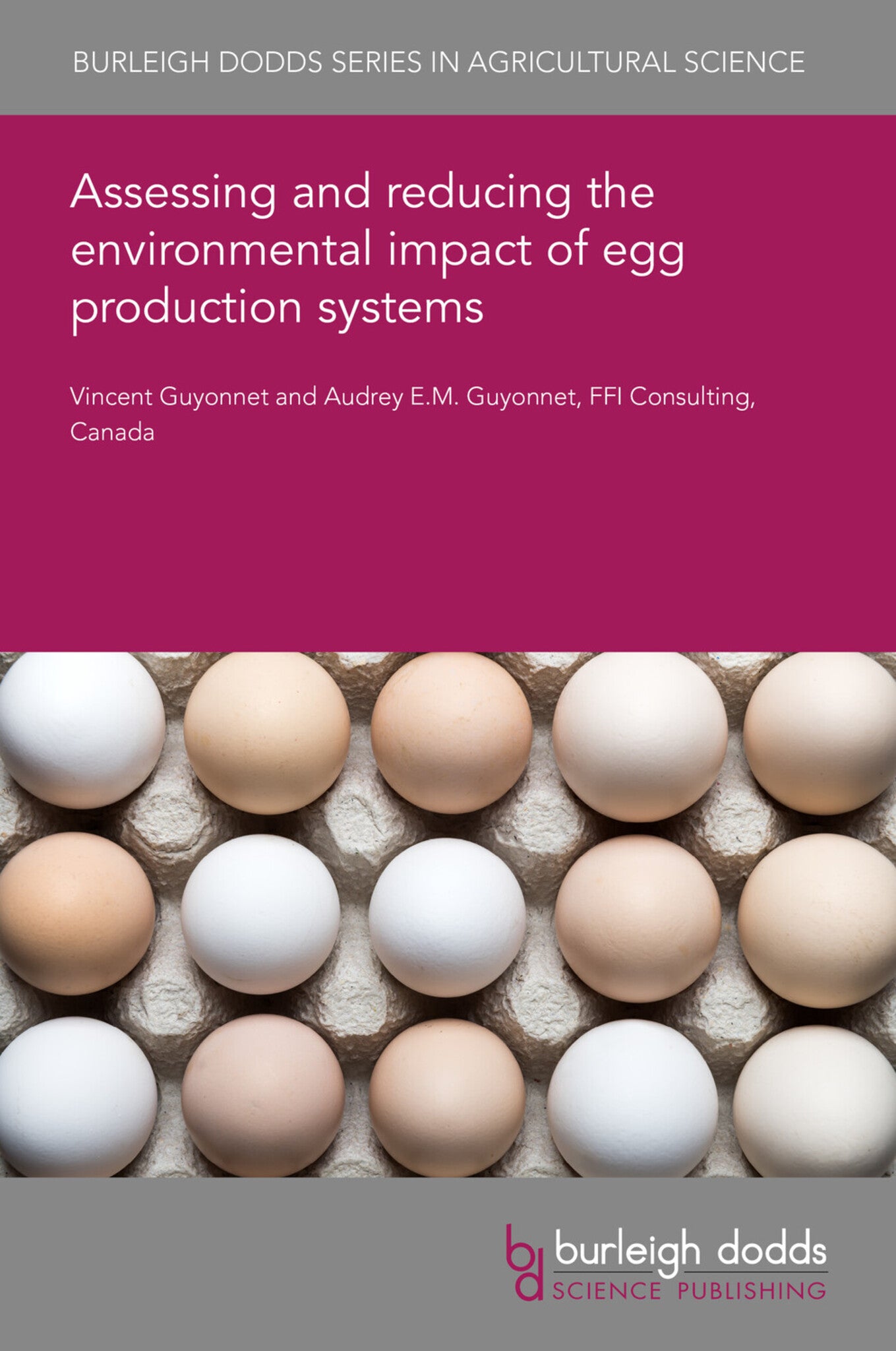We're sorry. An error has occurred
Please cancel or retry.
Assessing and reducing the environmental impact of egg production systems

Some error occured while loading the Quick View. Please close the Quick View and try reloading the page.
Couldn't load pickup availability
- Format:
-
14 November 2025

Once basic requirements are met, consumers’ perception of product quality is directed to animal welfare. Both in and beyond Europe, animal farming systems for egg production and laying hens are transitioning from indoor cage to cage-free systems (often still based on high stocking densities and selected genotypes) as well as alternative systems, such as organic and free-range using resilient genotypes and extensive conditions. Based on a One-Welfare approach, this chapter addresses the impacts and research challenges of this transition, ongoing welfare concerns for animals and impacts on egg quality.

TECHNOLOGY & ENGINEERING / Agriculture / Animal Husbandry, Poultry farming, TECHNOLOGY & ENGINEERING / Agriculture / Sustainable Agriculture, TECHNOLOGY & ENGINEERING / Food Science / Food Safety & Security, Sustainable agriculture, Agricultural science, Food and beverage safety

- 1 Introduction
- 2 Life cycle assessment: methodology and impact categories
- 3 Environmental footprint of shell eggs: climate change
- 4 Environmental footprint of shell eggs: land use change
- 5 Environmental footprint of shell eggs: emissions causing acidifcation and eutrophication
- 6 Environmental footprint of shell eggs: water footprint
- 7 Environmental footprint of shell eggs: other impact categories
- 8 Mitigation strategies: crop production, feed formulation and feed conversion
- 9 Mitigation strategies: bird management and health
- 10 Mitigation strategies: manure management
- 11 Mitigation strategies: housing systems
- 12 Conclusion and future trends
- 13 Where to look for more information
- 14 References



